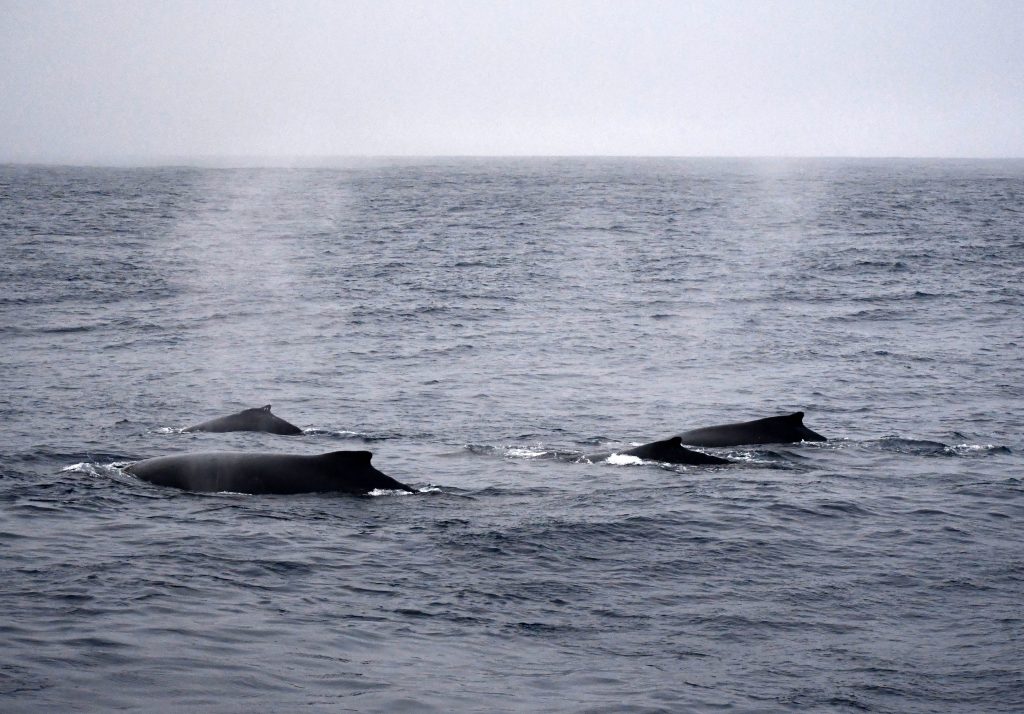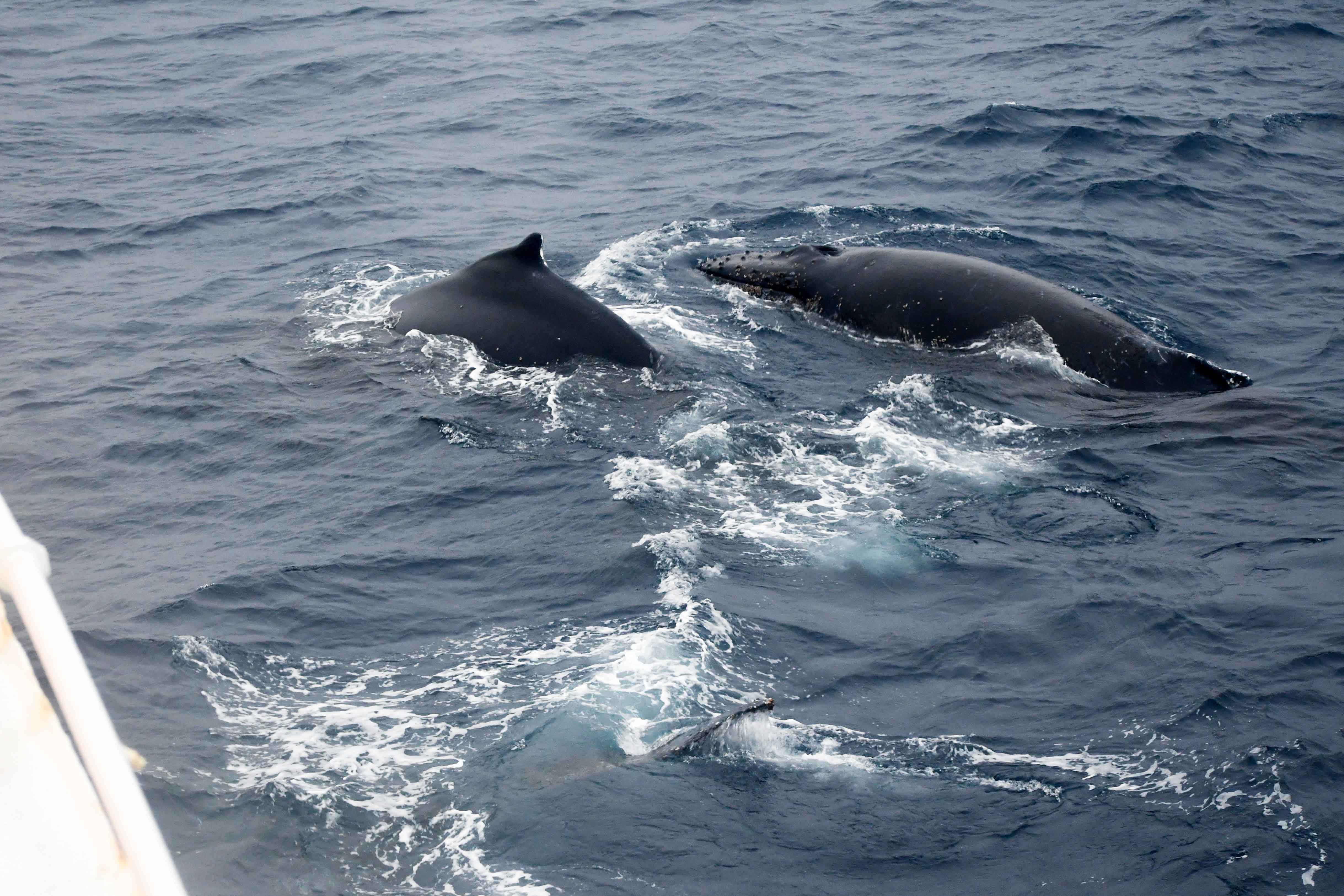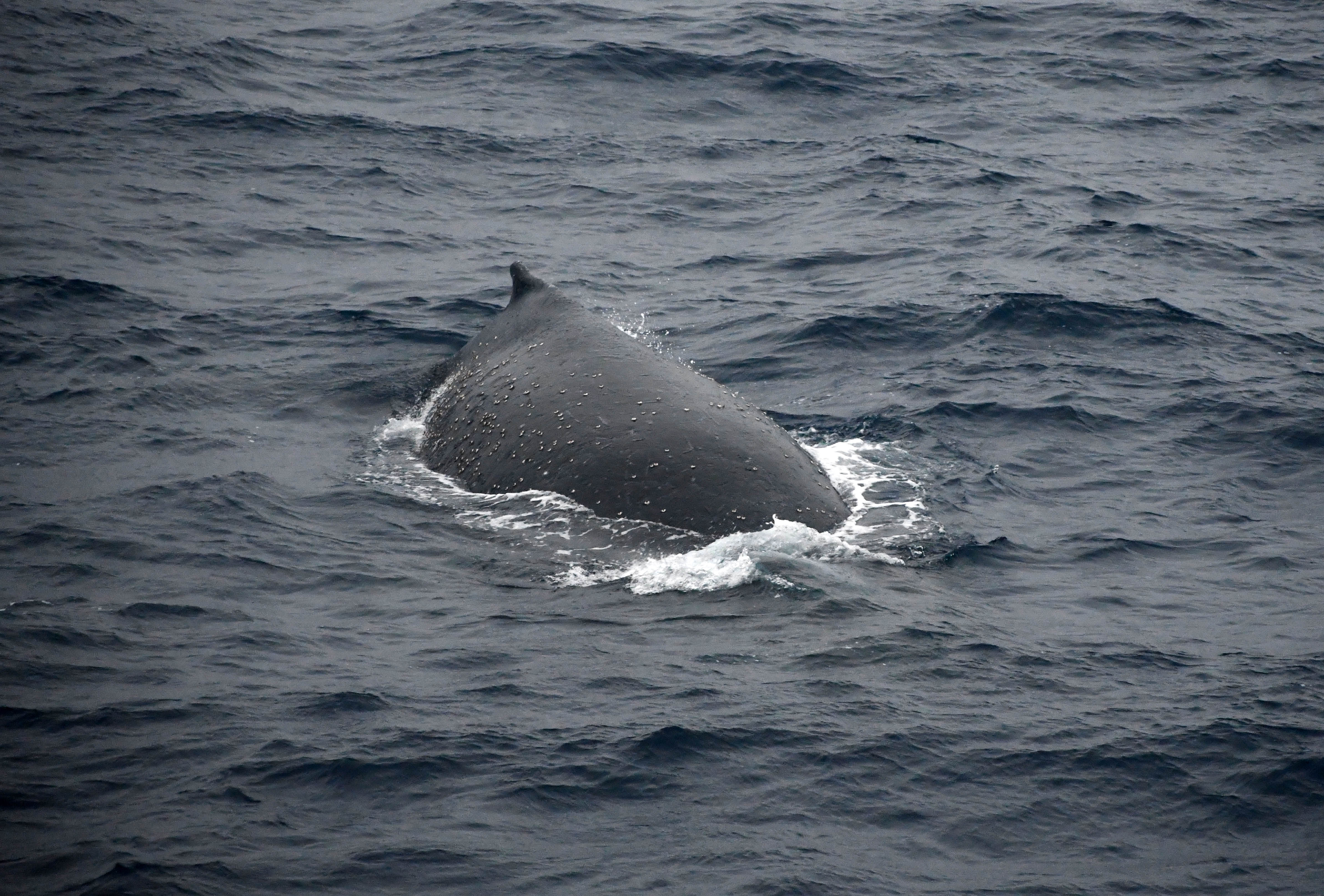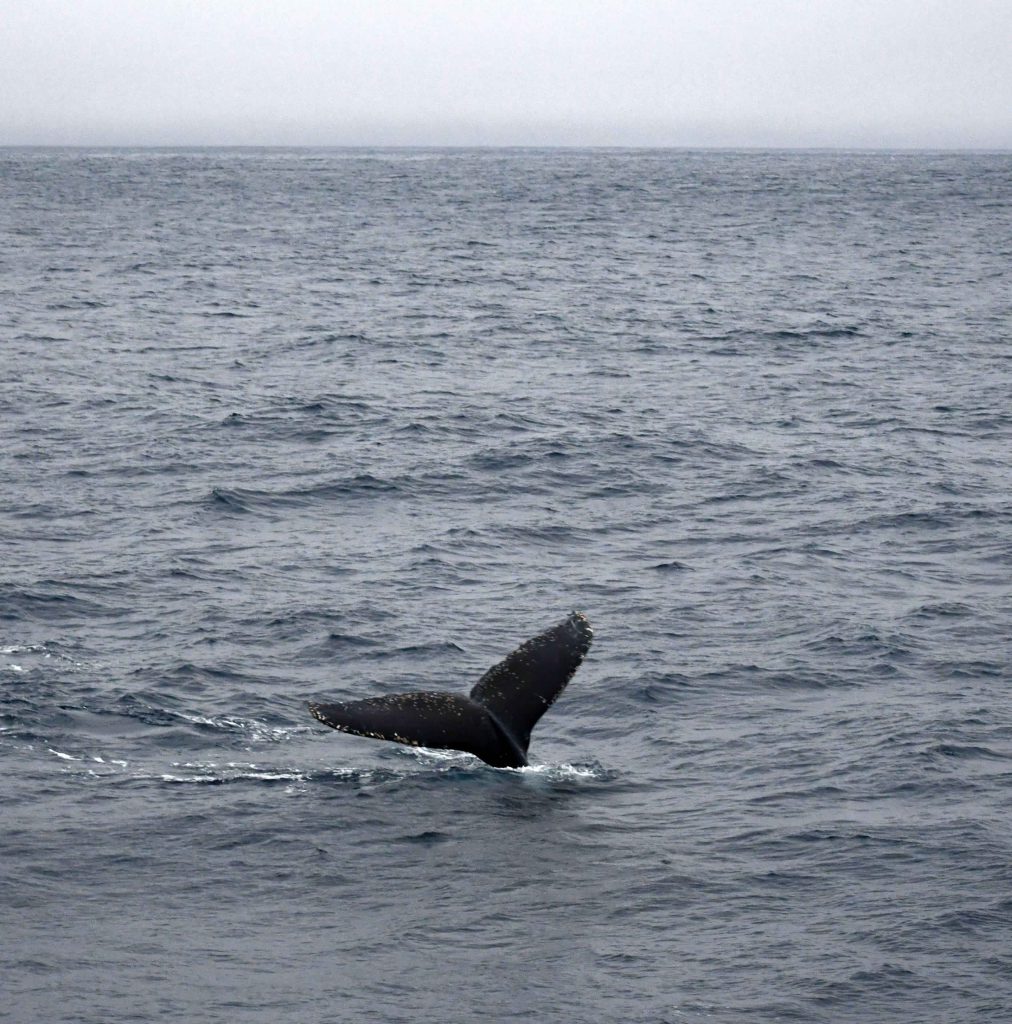
Southern Ocean Connection
Picture a moment that took your breath away. Can you remember the feeling of straining to view something spectacular? Did you gasp or cry out in surprised delight? Maybe you felt the excitement of others around you. Or perhaps you felt a deep sense of gratitude that you alone witnessed something beautiful. Did you feel like you could go on watching forever? Think of a moment that sparked a sense of childlike wonder, awe, and fascination. Do you have it? Close your eyes and hold on to it for a moment.
That is how I felt when I saw a pod of humpback whales directly off the ship’s bow.

Five giant bodies coming up to breathe, so close it seemed like you could touch the barnacles that adorned their backs. Close enough to feel the noise of giant lungs exhaling a mix of air and salt spray. Plenty close to see that one of them was smaller than the rest—a juvenile, perhaps on its first trip to cold, productive southern waters to feed.
Whales, and other wildlife for that matter, are so much more than a perk of studying and working in the Southern Ocean. They are one small (ironically) part of the complex system that we have come to study. Humpback whales are famous for their yearly equator-to-pole migrations. In the winter, the whales travel to balmy equatorial waters to breed. In the summer, they make the long journey to the poles to take advantage of rich feeding grounds supported by nutrient-rich waters upwelling from the deep ocean.

Because we spend many hours each day working on a specific problem or method, it’s easy for researchers to become engrossed in our individual sub-disciplines and to forget to place our science in a broader context. Maybe that’s why seeing whales up close fills me with such wonder. They remind me of the ocean that I fell in love with, the reason I got into marine science. Or maybe it’s simply that I find them fascinating. Either way, I love knowing there are moments in my working day that can take my breath away.

Beautiful story and your Dad is remembering the first whale watching tours with you. So heart warming to know that you are still in awe of wonderful ocean creatures and working so hard to protect our planet for future generations. you are awesome. love you more than every drop of water in that ocean Michelle Guitard!
-Dad